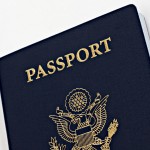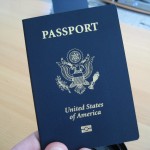Baby passport photos, and to a lesser extend all child passport photos, tend towards certain major headaches which inevitably lead to frustrated days at the photo booth, delays on receiving your passport, and outright rejections of your application. To avert these problems, it’s crucial to know about them in advance so you can take appropriate measures.
Other people in the picture
Perhaps the most common mistake made when taking baby passport photos: no other person is allowed in the picture. This can make photos somewhat difficult to take under photo booth conditions, but it’s non-negotiable – you cannot be in the picture with your baby.
Unapproved headgear
The vast majority of headgear, from hats to sunglasses, will result inevitably in your passport photos being rejected. There are very clear exceptions outlined for religious or medical needs – if you’re going to be taking advantage of these exceptions, make sure you’re 100% clear on the requirements.
Other obstructions of the face
Along the same lines as the hats and sunglasses problem, anything else that might get in between the camera and your baby’s face is a no-go as well. That includes pacifiers, scarves, and any number of other potential obstructions. You want a clear shot without anything to possibly complicate the approval process.
Non-neutral expressions.
A very common problem with baby passport photos, and one of the most difficult to overcome in many circumstances. If your baby is crying, laughing hard, or making any other major facial expression which might distort and obscure his or her features, you run the risk of having your passport photos rejected. Getting a tranquil expression can be quite a chore, but it’s a necessity.
To avoid most of these problems, or at least make them easier to deal with, using your own camera at home in combination with a passport photo service, such as Paspic, is often the easiest solution. You can take the picture on your own terms, on your own schedule – and you only need one perfect moment to grab the perfect picture. Compare that with trying to get the same results in a booth in a potentially crowded area, and you can see the advantage.


